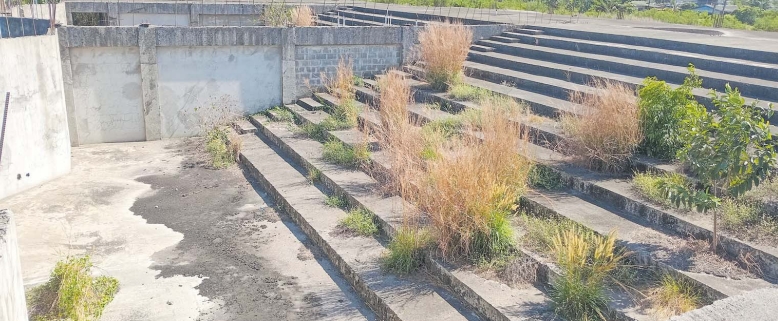DESIGN, payment issues and adverse weather conditions have been identified by a contractor as the reasons behind the incomplete Fiji National University (FNU) Naiyaca campus project.
This project was one of the most scrutinised initiatives of the previous administration because of the significant financial investment involved and the lack of tangible outcomes.
FNU has never had a campus in Labasa and usually operated from rented premises, thus the expectation from locals for the completion of this campus was significant. Not only would it enhance educational opportunities in the Northern Division, but it would also help families save on the extra costs of having to send their children to Savusavu or Viti Levu for their tertiary education.
The project was carried out in stages, beginning with the construction of a building that would house the administration offices, lecture rooms, tutorial rooms and computer labs. Reports showed that stage one alone cost $36million.
Subsequent stages would involve the construction of four other buildings that would provide more lecture rooms for the National Training and Productivity Centre (NTPC) division.
In March 2016, Iqbal Jannif, then FNU chancellor and chair of the FNU Council, announced that the Government had allocated a $5m grant to the project, and the expected date of completion was the end of 2017.
This, however, did not materialise as he acknowledged in the 2016 FNU annual report that work on the project was progressing slowly due to uncontrollable factors. This resulted in a revised timeline for construction to commence in the second quarter of 2017.
By December 2017, at a graduation ceremony in Labasa, Mr Jannif told the media that work would begin in early 2018.
In April 2018, FNU signed a contract with Kartika Construction Plumbing Services Ltd as the main contractor who “commenced works on the foundation, boundary fencing and surrounding retaining wall”, according to the 2018 FNU annual report.
“The $34m first phase of the campus is expected to be completed by December 2019 which will be operational by first semester 2020,” the report stated.
However, the 2019 FNU annual report indicated another delay, that the completion date would be semester one of 2021.
“The project contractor, Kartika Construction Plumbing Services Ltd, commenced work in April 2018, completing the ground floor building shell and building retaining walls on three sides of the property,” according to the 2019 FNU annual report.
“While work continues on the upper floor steel framing, car park, porte-cochere and services yard.
“The $34m first phase of the project is expected to be completed by the first semester, 2021.”
By 2019, the timeline of the project had been revised four times. And what or who was to blame?
According to a contractor, who spoke to The Fiji Times on the condition of anonymity, there were many factors that contributed to the continuous delays and extension of time. One of these was the weather.
“It kicked off good in 2018. It was going to a good place and then all of a sudden, the weather became bad. It was raining a lot because it was the rainy season,” he explained.
“That year, there was continuous rain in October, November, December, January, February, March, April, May. For eight months, it was continuous rain. We got the rainfall data for that.
“Every time it was raining, we had to apply for an extension of time.”
The Fiji Meteorological Service’s (FMS) annual climate summary of 2018 showed that Fiji experienced three tropical cyclones (TC) that year and the national average rainfall was 2538mm, which was 109 per cent of the long-term average of 2324mm.
Data from that year showed that extended and widespread rainfall in October resulted in flooding in certain parts of the Northern Division and the eastern half of Viti Levu. For November and December, it was relatively dry all around the country except for the Central Division which recorded above average rainfall for both months.
For 2019, the weather office recorded above average rainfall in January and April due to the passage of TC Mona and active troughs of low-pressure systems. The average rainfall for the year was 2414mm, 104 per cent of the long-term average and 2019 was recorded as the 22nd wettest year on record.
“For eight months, we had to apply for extensions of time and that’s nearly 250 days altogether,” he said.
“Not only for the rain, for the lack of designs and some of the places, FNU changed the design. In some places, the drawings were not coordinated properly.”



